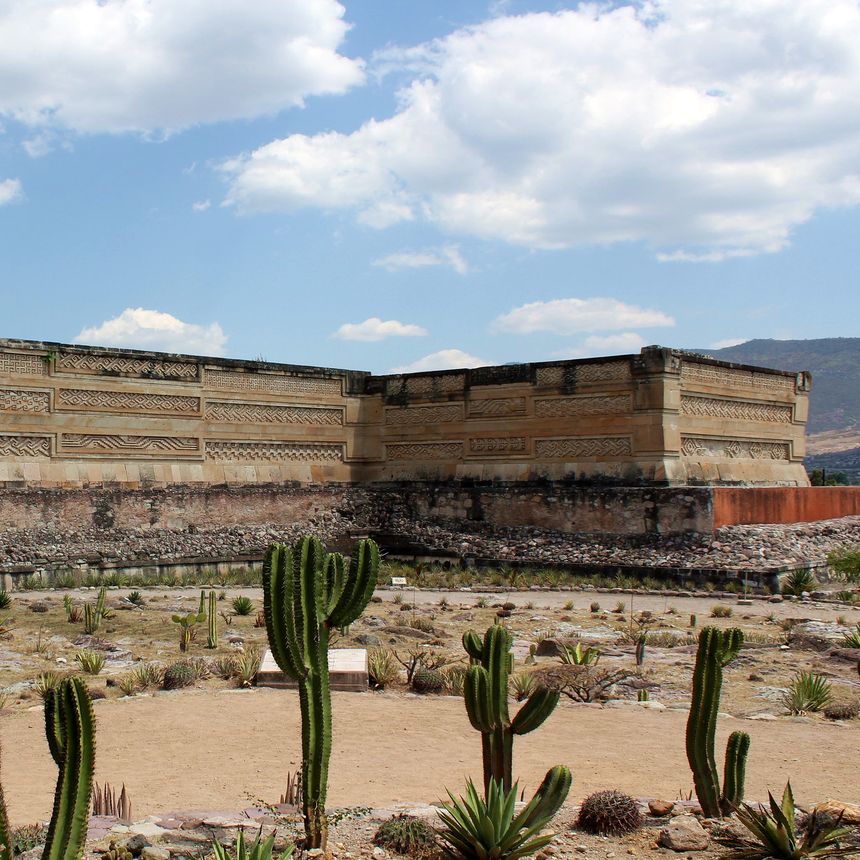Building L (also known as the Dancers Building) is one of the most shocking with stone carved figures of males with mutilated genitalia. The physical features of these carvings with plump short bodies, round heads, flat noses and slanting eyes suggest those of the Olmecs, enemies of the Zapotecs and may bear witness to the human sacrifice that almost certainly took place here. They originally believed to be dancers at some form of ritual dance. In addition to this several buildings are believed to have astronomical functions including building P (the guy who thinks up names has clearly been on holiday for some time) with its enormous stairway. Various buildings – platforms, palaces, mounds, shrines and tombs – dot the site, none perhaps more important to our understanding of Zapotec history and tradition than tomb 7. Tomb 7 was discovered in 1932 by Alfonso Caso, one of Mexico’s most renowned scientists and was found to contain some 200 ritual objects made from materials as diverse as Gold, silver, jade, turquoise, obsidian, pearl, alabaster, coral, as well as human and feline bones. This also provided us with clues as to the extent of the sophistication of trade in Zapotec times, many of these items’ origins lying in very distant lands. The items are on exhibit in the Museum of Oaxacan cultues in Oaxaca itself. I am particularly looking forward to seeing the human skul encrusted with turquoise mosaic, jade and gold. It is easy to see why Cortes was tempted by such obvious wealth in the new world. Sadly his greed, and that of many other conquistadors means that few ancient sites have survived as well as Monte Alban, whose mysterious downfall before the Spanish arrived may have been the key to its long term survival.
This blog is part of an Off-The-Beaten-Track Travel Diary. Click on the links below to navigate through this journey.

